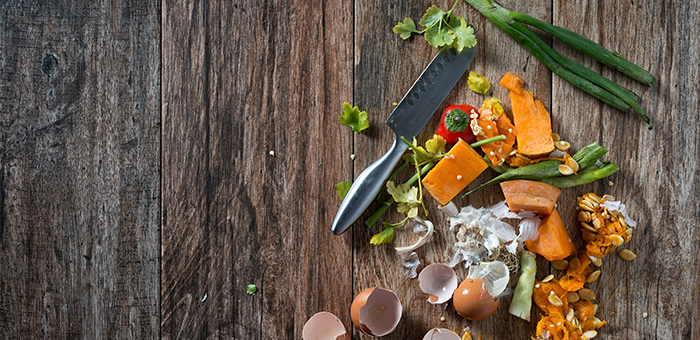Don’t Waste Away – The problems of food waste
 This month we’re looking at the amount of food that is wasted, the reasons for this, what is being done about it on a national level, and the many things that we, as individuals, can do about it.
This month we’re looking at the amount of food that is wasted, the reasons for this, what is being done about it on a national level, and the many things that we, as individuals, can do about it.
Eating good food is a regular source of pleasure for most people. Yet, a lot of food gets thrown away every day without a second thought. Why discard something you enjoy, that nourishes you and that has cost time and money?
According to WRAP (Waste and Resources Action Programme) approximately one-third of all food produced in the world is lost or wasted. That’s enough to feed 3 billion people. Sadly, there are still people starving and many, even in prosperous countries, who struggle to get enough food. Look at the rise in food banks in the UK. But sadly over £800 worth of food is thrown away by the average UK family per year (1).
Food waste costs money both to individuals and to global economies, it has a negative effect on the environment and makes food poverty a disgrace to the human race.
Why and How Is Food Wasted?
There are many ways that food is wasted. Here are just a few examples:
- Fruit and vegetables that don’t meet exacting standards of size and shape get discarded before they get to the shop floor.
- Food maybe left to rot in a field if it is not profitable enough to harvest.
- Sell-by and use-by dates on packaged foods mean food that is fine to eat gets thrown out either by supermarkets or by consumers.
- Poor planning and organisation mean that food goes off in the fridge after it’s been purchased.
- Oversized portions served in restaurants and take aways.
That’s time, money and nutrients all going to waste.
Problems Caused by Food Waste
- Food waste causes greenhouse gas emissions. The worst place to put food is into the bin as it will end up in landfill. In this oxygen and bacteria starved environment food decays really slowly releasing methane gas which is 25 times more harmful to the environment than carbon.
- Food waste uses up land, water, energy, labour, money and transport – these are all involved in growing and preparing food. Our land is under pressure to produce more food fueling the use of pesticides and fertilisers, which in turn, damage the soil, water supply and wildlife habitats.
- Food Poverty – globally we produce more food than we need to feed everyone on the planet but sadly some people don’t have enough to eat.
- Financial waste – around 70% of food we throw away in the UK after leaving the farm comes from the home. This costs almost £70 per month for the average family. The less food we throw away the lower the price of food becomes as demand reduces.
- Land waste – the food and drink currently wasted in the UK would take an area almost the size of Wales to grow. That area of land could fit almost 4.7 million detached properties. Or it could be rewilded and provide habitats for wildlife.
Reducing the amount of food that ends up in the bin saves money, reduces packaging waste, slows down deforestation, frees up land and reduces food poverty.
See blog posts on 18 Ways to Reduce Food Waste and 12 Tips for Food Storage and Usage for practical ideas on how to store, preserve and eat food rather than throwing it away.
Here are some food waste reducing strategies and success stories from around the world:
- In the UK large-scale interventions aimed at reducing food waste across supply chains and households has contributed to a reduction in post farm gate food waste between 2007 and 2015 of around 9%. This means £3.4 billion less food being wasted in 2015 compared to 2007.
- The reduction of food waste has saved councils almost £70 million in 2015 (compared to 2007) due to reduced landfill charges.
- In France, a law in 2016 banned grocery stores from throwing away any food deemed edible. Instead the food goes to food banks.
- In Britain Tesco, the biggest grocery chain, has got rid of best before dates on fruit and vegetables to reduce the likelihood of customers throwing them away when they are still fine to eat.
- Germany is aiming to halve food waste by 2030 using various strategies including smart packaging that indicates when food is no longer safe to eat.
- In Toronto, Canada, a chef has set up a pay what you can grocery store with a bakery and cafe that sells foods that have been rescued. Any left over food gets donated to a nearby homeless shelter.
It’s heartening to know that a range of strategies are being used to reduce food waste. Read the blog posts on 18 Ways to Reduce Food Waste and 12 Tips for Food Storage and Usage to find out what you can do personally.
References